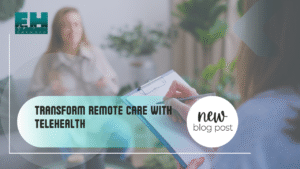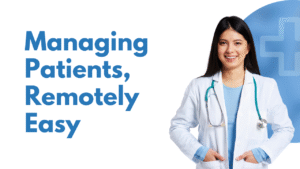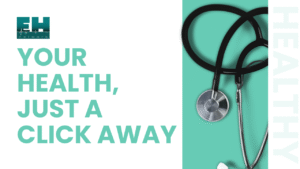Remote patient monitoring services track patient health at home in real-time, helping providers catch problems early, before they require a hospital visit.
The result? Fewer readmissions, better outcomes, and major cost savings for both healthcare systems and patients.
As hospitals and clinics look for smarter ways to support long-term care, remote patient monitor services have emerged as a powerful solution. Whether it’s tracking blood pressure, oxygen levels, glucose, or post-op recovery, this tech-driven model enables timely intervention and continuous care.
What Is Remote Patient Monitoring (RPM)?
Remote patient monitoring service refers to the use of connected devices to gather and transmit health data from a patient’s home to their care team. This may include:
- Wearables (for heart rate, activity, sleep)
- Glucose monitors
- Blood pressure cuffs
- Pulse oximeters
- Smart weight scales
Data is securely shared in real time, allowing doctors to:
- Track chronic conditions
- Monitor treatment progress
- Respond to early warning signs
The Link Between RPM and Fewer Hospital Readmissions
Preventing readmissions is a top priority for hospitals. Not only do frequent returns strain resources, but they can also negatively impact patient outcomes and trigger reimbursement penalties.
Remote patient monitor services help reduce readmissions by:
- Identifying complications early – Alerts are sent to providers when metrics exceed safe thresholds.
- Improving medication adherence – Patients are more likely to follow plans with regular check-ins.
- Encouraging healthy behavior – Daily monitoring keeps patients engaged in their own recovery.
A study from the American Journal of Managed Care found that RPM programs reduced 30-day readmissions by up to 50% in certain populations.
Cost-Saving Advantages of Remote Patient Monitoring
Beyond reducing hospital visits, remote patient monitoring services help cut long-term healthcare costs:
- Fewer emergency room visits
- Lower transportation and staffing costs
- Reduced in-person appointment volume
- Optimized use of clinical resources
Plus, insurance providers and CMS (Medicare/Medicaid) are increasingly covering RPM solutions, which boosts access for more patients.
Which Conditions Benefit Most from RPM?
Remote patient monitoring services are particularly useful for managing:
- Diabetes
- Hypertension
- COPD
- Congestive heart failure
- Post-operative care
- Pregnancy and prenatal tracking
The more consistent the data, the easier it is to make informed decisions without in-person visits.
Building Trust Through Remote Monitoring
Some patients worry that virtual care might feel distant. But in reality, RPM improves connection by offering:
- Timely responses to data changes
- Personalized feedback
- Direct communication with care teams
Instead of replacing human care, remote patient monitoring services enhance it by extending its reach beyond the clinic walls.
Integrating RPM with Telehealth for Seamless Care
When remote patient monitoring services are combined with telehealth platforms, providers can offer more holistic and coordinated care. Real-time data can inform virtual consultations, enabling more accurate diagnosis and timely treatment decisions.
Benefits include:
- Better care coordination between providers
- Faster treatment adjustments
- Enhanced visibility into day-to-day patient health
This integration transforms episodic care into a continuous, proactive model.
Overcoming Barriers to RPM Adoption
Despite its advantages, some providers and patients hesitate to adopt RPM due to perceived complexity or lack of awareness. Key ways to overcome these challenges include:
- Education and training: Equip staff and patients with easy-to-follow instructions
- Simplified devices: Choose user-friendly equipment with minimal setup
- Clear communication: Ensure patients understand the purpose and benefits of monitoring
With the right tools and support, adopting a remote patient monitoring service can be simple and highly impactful.
Final Thoughts
The future of healthcare isn’t only in hospitals, it’s in the home. With the right remote patient monitoring service, patients stay safer, healthier, and out of the ER.
Whether you’re a provider or a healthcare administrator, now’s the time to integrate RPM into your care model.
Empower your patients. Lower your costs. Improve your outcomes.
Ready to explore remote patient monitoring options? Visit e-Health Network to learn more






